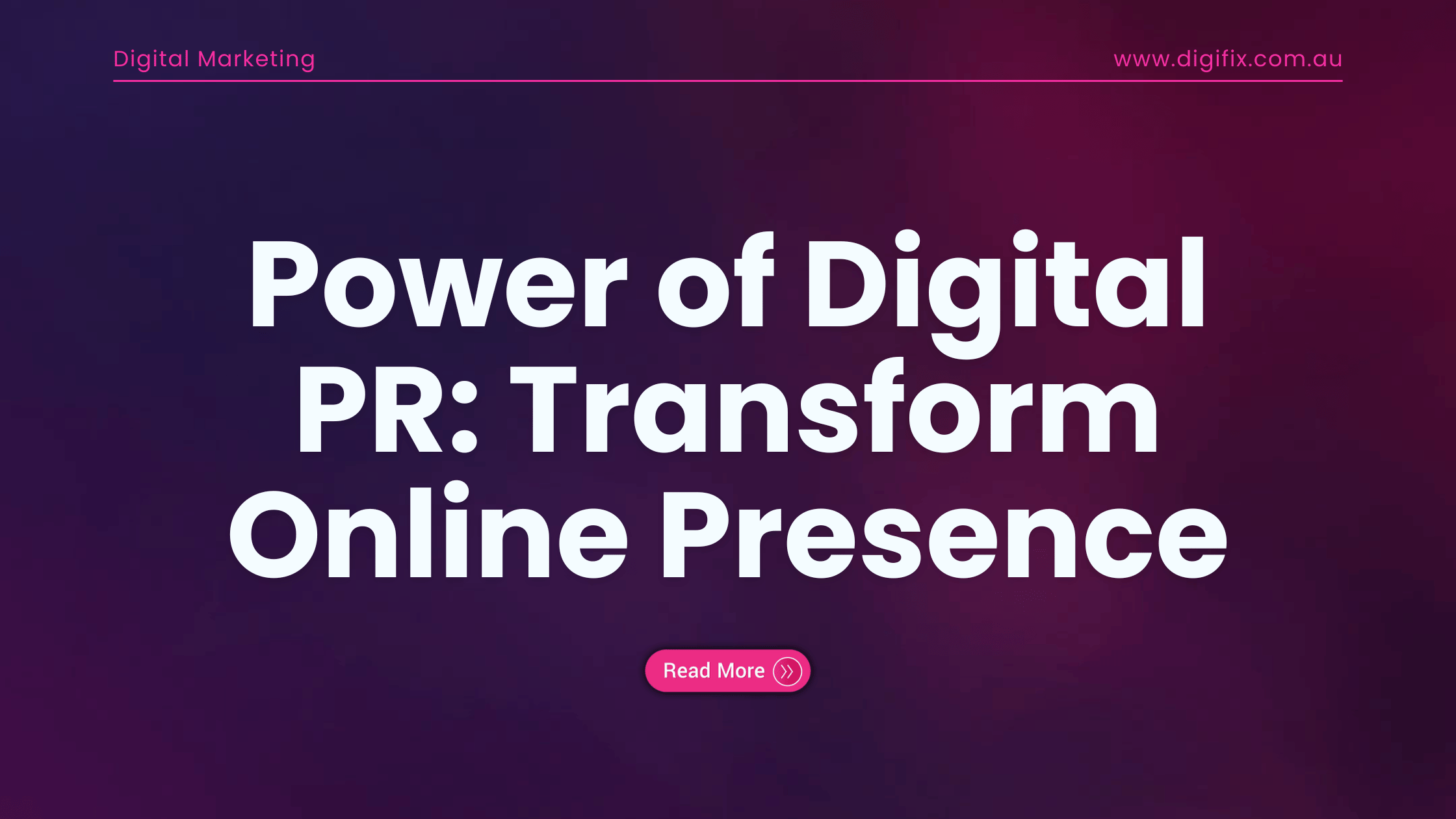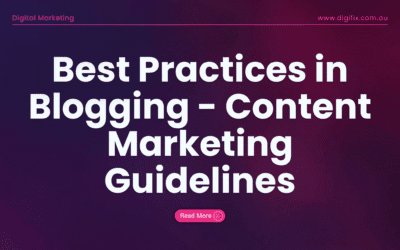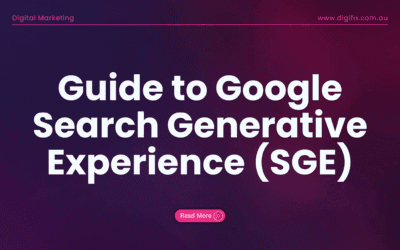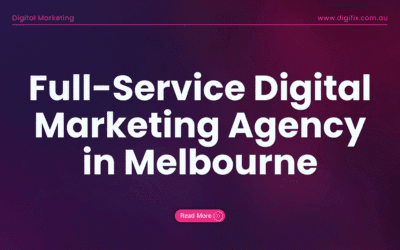What is Digital PR?
Digital Public Relations (Digital PR) is a modern take on traditional PR. It uses online platforms and tools to enhance a brand’s visibility, credibility, and engagement. While conventional PR relies on established channels such as newspapers, magazines, television, and in-person events, Digital PR takes a digital-first approach, leveraging the power of online channels to connect with a broader and more targeted audience.
Many businesses now prioritize digital PR because their target audience is more accessible online. Whether searching for products on Google, engaging on social media, or consuming content through blogs and videos, a digital-first approach ensures brands are visible where their audience spends the most time.
By bridging the gap between traditional public relations and the digital world, Digital PR has become an essential tool for businesses aiming to stand out in a crowded online space.
Key Differences Between Digital PR and Traditional PR
Channels Used:
Traditional PR relies on channels such as television, radio, print media, and offline events to communicate with audiences. These methods are tried and tested for building brand awareness and credibility but are limited to physical or geographical boundaries.
On the other hand, Digital PR uses online platforms like digital publications, blogs, social media, search engines, and email marketing. These channels help businesses to create real-time connections with their audiences and share information.
Audience Reach:
Traditional PR is particularly effective for targeting local or regional audiences, often through newspapers, magazines, or broadcast media. While it reaches a broad audience, it can sometimes lack precision when addressing niche groups.
Digital PR, however, helps businesses to focus on niche or global audiences, tailoring their campaigns based on demographics, behaviors, and interests. This level of customization ensures brands can effectively engage with their ideal customer profiles, regardless of their location.
Measurement:
One of the major differences between traditional and digital PR lies in how success is measured. Traditional PR often relies on qualitative metrics, such as estimated audience reach or media impressions, which can be harder to quantify.
In contrast, Digital PR uses data-driven tools to provide measurable insights. Metrics such as click-through rates (CTR), backlinks, domain authority (DA), and audience engagement levels make it easier to assess the return on investment (ROI) and the campaign’s overall effectiveness.
Cost and Scalability:
Traditional PR campaigns are more expensive and are often challenging to scale. This is especially true when they rely on television ads or large-scale events. These campaigns typically require significant resources and time.
Digital PR, however, is more cost-effective and scalable. Brands can use online influencers, viral content, and automation tools to expand their reach without drastically increasing costs. This scalability makes Digital PR a more flexible and budget-friendly option for businesses of all sizes.
Benefits of Digital PR:
Digital PR offers numerous advantages, making it a cornerstone of modern marketing strategies. Unlike traditional PR, Digital PR capitalizes on online platforms to build relationships, enhance public perception, and boost a brand’s online presence. Here’s a closer look at some key benefits of Digital PR:
- Enhances Search Rankings Through Link Building
One of the primary goals of a digital PR campaign is to secure high-quality backlinks from authoritative websites. Backlinks improve search rankings, helping businesses achieve better organic ranking on search engines. By creating and distributing valuable content such as articles, infographics, or press releases, Digital PR aligns with SEO strategies to drive traffic and increase visibility.
- Strengthens Online Presence and Brand Authority
Digital PR strategies boost a business’s visibility across digital channels. From engaging on social media to securing features on online publications, these efforts amplify a brand’s online presence and establish credibility. As a result, businesses are better positioned to connect with their target audience and showcase their product or service as a trustworthy choice.
- Builds Relationships With Influencers and Journalists
Successful digital PR efforts focus on nurturing relationships with key players in the online ecosystem, such as journalists, bloggers, and influencers.
These relationships are instrumental in gaining exposure for your brand through trusted sources, improving its public perception and reach. Whether securing an online feature or partnering with influencers, these collaborations enhance the effectiveness of Digital PR campaigns.
- Provides Measurable, Data-Driven Results
Unlike traditional PR, Digital PR relies on data-driven insights to track and measure success. Metrics like website traffic, high-quality backlinks, social shares, and engagement levels offer a clear picture of a campaign’s impact. These measurable outcomes enable businesses to optimize their digital PR strategies and improve the ROI of their PR efforts.
- Improves Customer Engagement
Digital PR creates opportunities for direct interaction with audiences, fostering meaningful connections. For example, a well-crafted press release or engaging content shared on social media can spark conversations and increase engagement with your target audience. This approach not only improves brand loyalty but also supports broader marketing goals.
- Supports SEO and Long-Term Growth
The synergy between Digital PR and SEO is undeniable. Effective Digital PR campaigns contribute to a brand’s search rankings by generating valuable backlinks, improving domain authority, and driving organic traffic. Over time, these efforts build a strong foundation for sustainable growth and a competitive edge in the online space.
How Digital PR Works?
Digital PR is using online tools and strategies to boost a business’s visibility and reputation. It involves creating engaging content, building connections with influencers and media, and promoting your brand through various digital platforms. Here’s a breakdown of the key activities involved in Digital PR and how they work:
- Creating High-Quality Content
At the heart of any successful Digital PR campaign is high-quality content. This could be:
- Articles: Informative blog posts, thought leadership pieces, or how-to guides that solve your audience’s problems.
- Infographics: Eye-catching visual content that simplifies complex information. For example, an infographic about “Top 10 Digital Marketing Trends” could be shared widely on social media and linked by other websites.
- Reports and Case Studies: In-depth studies showcasing industry insights or your company’s successes.
Great content attracts attention, earns shares, and encourages other websites to link to you, helping your brand gain high-quality backlinks and improve its search engine rankings.
- Securing Backlinks from Authoritative Websites
Link building is a critical part of Digital PR. The goal is to get other reputable websites to link to your website. This can be done by:
- Pitch your content (like a blog or report) to relevant websites or online publications.
- Offering expert opinions or quotes for journalist articles.
- Creating shareable content, such as a fun quiz or interactive tool, that naturally earns links.
Imagine a fitness brand creating a free “Calorie Tracker Tool.” If popular health blogs or online magazines link to it, the brand gains both traffic and SEO benefits.
- Influencer Collaborations
Partnering with influencers is a powerful way to reach your target audience. Influencers already have loyal followers who trust their recommendations. By working with them, you can:
- Introduce your product or service to a broader audience.
- Build credibility through their endorsement.
- Encourage shares and engagement on social media.
A skincare company might send products to beauty influencers for reviews. When the influencer shares their positive experience on Instagram or YouTube, their followers are more likely to trust the brand and check it out.
- Social Media Promotion
Social media is a vital tool for spreading the word about your brand. It directly engages with your audience, shares your content, and amplifies your online presence.
- Use platforms like Instagram, Twitter, LinkedIn, and Facebook to share blog posts, press releases, or other content.
- Create interactive posts (polls, questions, or giveaways) to drive engagement.
- Use paid social ads to target specific demographics or interests.
Example: A tech startup launching a new app could use a combination of influencer collaborations and an Instagram campaign with hashtags like #NextGenTech to build excitement and drive downloads.
- Online Press Releases
Press releases aren’t just for traditional media anymore. Digital press releases are distributed online to share news, like product launches, awards, or events. These press releases can:
- Get picked up by online news outlets or blogs.
- Drive traffic to your website.
- Help shape your public perception as an industry leader.
Example: If a restaurant wins a local award, a press release announcing this achievement could be shared with food blogs and online publications. This not only builds the restaurant’s credibility but also attracts new customers.
Together, these efforts improve your search rankings, increase your visibility, and help you engage with your target audience effectively.
Challenges in Digital PR
While Digital PR offers incredible opportunities for businesses to grow their online presence and credibility, it also comes with challenges. Here are some of the most common hurdles brands face in Digital PR and why overcoming them is essential:
- Building Trust with Journalists and Media Outlets
One of the biggest challenges in Digital PR is earning the trust of journalists, bloggers, and media outlets. These professionals receive countless pitches daily, so standing out can be difficult. If your outreach comes across as irrelevant, generic, or overly promotional, it’s unlikely to gain traction.
How to Overcome It:
- Personalize every pitch based on the journalist’s beat or interest.
- Offer valuable insights, data, or exclusive content that aligns with their audience.
- Be patient and consistent in your efforts to foster genuine relationships over time.
- Standing Out in a Crowded Online Space
The digital world is noisy, with countless brands competing for attention. From social media to online publications, standing out and capturing your audience’s interest can be challenging. Simply creating content is no longer enough; it must be exceptional, relevant, and timely to make an impact.
How to Overcome It:
- Focus on creating high-quality, unique, and visually engaging content.
- Leverage current trends and timely topics to keep your brand relevant.
- Collaborate with influencers or niche platforms to tap into dedicated communities.
- Managing Online Reputation
Digital PR often involves navigating the complexities of online reviews, social media conversations, and public perception. Negative reviews or a poorly received campaign can quickly spiral out of control, affecting the brand’s reputation.
In the digital age, every action a business takes is highly visible. A single misstep can lead to criticism or even a full-blown PR crisis. Managing these situations requires tact and agility.
How to Overcome It:
- Monitor online mentions and reviews regularly to stay on top of public sentiment.
- Address negative feedback promptly and professionally.
- Maintain transparency and authenticity in all communications.
- Measuring ROI and Effectiveness
Unlike traditional PR, Digital PR offers measurable results, but understanding which metrics to track and how to interpret them can still be tricky. Some brands struggle to determine if their PR efforts are directly driving traffic, conversions, or other desired outcomes.
How to Overcome It:
- Set clear goals and key performance indicators (KPIs) at the start of a campaign (e.g., number of backlinks, media coverage, website traffic).
- Use tools like Google Analytics, SEMrush, or BuzzSumo to track your results.
- Be patient, as some benefits—like higher search rankings—take time to materialize.
- Keeping Up with Changing Trends and Platforms
The digital landscape is constantly evolving, with new platforms, trends, and algorithms emerging regularly. Staying ahead of these changes is a challenge for brands and PR professionals alike.
How to Overcome It:
- Stay updated on industry trends and platform updates.
- Experiment with new formats or platforms to see what works for your audience.
- Work with experts or agencies who specialize in staying ahead of the curve.
While these challenges may seem daunting, they’re not impossible. By being proactive, strategic, and adaptable, businesses can navigate the hurdles of Digital PR and create campaigns that truly stand out.
Unlock the Power of Digital PR: Transform Your Brand’s Online Presence:
Digital PR is a powerful tool for businesses looking to amplify their online presence, build credibility, and connect with their target audience. By following strategies like creating high-quality content, securing backlinks, collaborating with influencers, and promoting through social media and online press releases, businesses can effectively enhance their visibility and reputation in today’s competitive digital landscape.
If you’re ready to take your PR efforts to the next level, consider integrating Digital PR into your marketing strategy. Whether you’re a small business or an established brand, Digital PR can help you stand out in a crowded online space. For tailored strategies and expert support, reach out to the specialists at DigiFix. The 1st Consultation is FREE. Let’s work together to help your business thrive online!





0 Comments